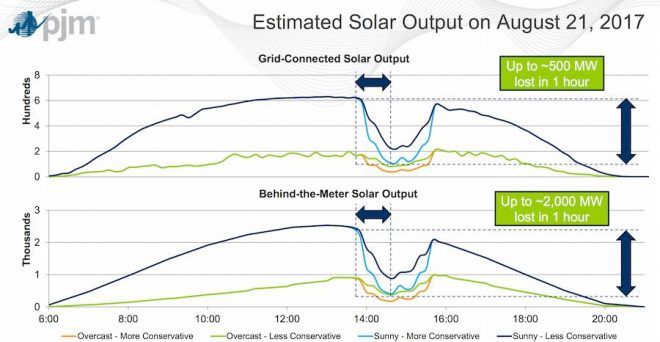The browser you are using is not supported. Please consider using a modern browser.

The Impact of the Upcoming Total Solar Eclipse
The last time America experienced a total solar eclipse was July 11th, 1991. Back then, it was an intriguingly rare event but had little impact on our power grid because solar energy was so rarely used. On August 21st, the United States will experience another total solar eclipse but this time it will have a much greater impact on the energy industry and for the first time electricity providers are planning and preparing for the loss of energy production.
While the vast majority of energy production in the United States still comes from fossil fuels, solar energy has grown exponentially in the last 10 years. There are many communities around the US that have become 100% solar energy powered and Californians now get nearly 40% of their power from solar at peak sunshine levels.
While California will not be completely darkened by the total solar eclipse, they will see a partial sun blockage. The California Independent System Operator is expecting the power output to drop 70 MW per minute on August 21st and is urging utilities to be ready for the decrease energy output during the solar eclipse. They are also urging California residents to conserve power during the expect 2 hour eclipse that hits the state to ease the strain on the power grid.
Other states will not be so lucky and will be completely dark during the solar eclipse. 12 states will be 95-100% obscured from the sun. The solar energy grid is not set-up to handle a total solar eclipse since they happen much faster than a sunset and in the middle of peak slight light times. PJM, a regional transmission organization, expects a temporary loss of up to 2,500 megawatts of solar power in the mid-Atlantic states on the August 21st eclipse. States like North Carolina and South Carolina will be the most impacted with a total solar black-out. However, no outages are expected due to plenty of energy reserves.

Even though the August 21st total eclipse is only going to last a total of 3 hours, it will have a significant impact on the energy production in the United States. While no outages are expected, electricity providers now, for the first time, have to start planning and preparing for this solar eclipse and future solar eclipses. Another total solar eclipse is expected in 7 years which is sure to have an even greater impact on energy production as technology advances and American’s energy capacity is expected to double or even triple by then.
